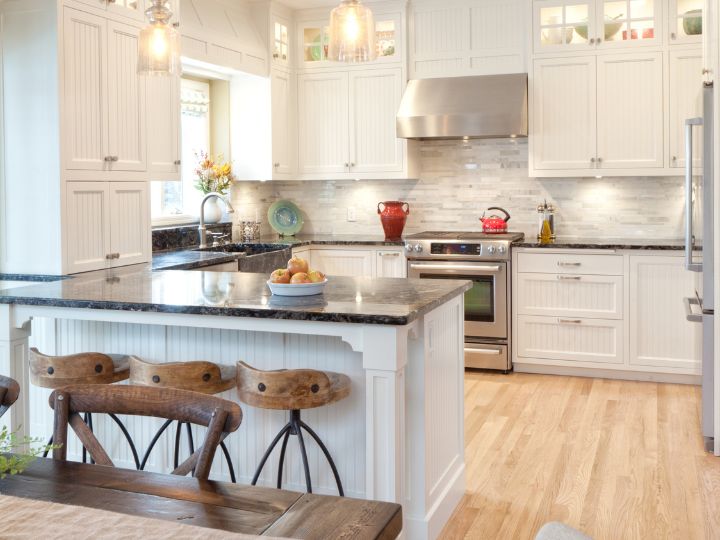
Concrete Floor Finishes for Grand Rapids Basements

Basements are often overlooked spaces in our homes, yet they offer incredible potential for additional living areas, entertainment zones, or storage solutions. One of the most crucial aspects of basement remodeling is choosing the right flooring. Concrete is a popular choice for basement floors due to its durability, versatility, and cost-effectiveness. However, the finish you choose can significantly affect the appearance, feel, and functionality of your basement.
In this article, we will explore various concrete floor finishes for basements available in Grand Rapids, focusing on their benefits, aesthetics, and maintenance requirements. By the end of this post, you’ll have a clearer understanding of how to enhance your basement space with the right concrete flooring options.
Key Takeaways
- Concrete is a durable and cost-effective flooring option for basements.
- Various finishes, including polished, stained, and stamped concrete, can transform the look of your basement.
- Proper installation and maintenance are key to ensuring the longevity of concrete finishes.
- Consider factors like style, functionality, and moisture levels when choosing a concrete floor finish for your basement.
- Concrete finishes can enhance indoor air quality and reduce allergens compared to traditional flooring options.
Understanding Concrete Floor Finishes
Concrete flooring is not just about a gray slab; it can be customized in numerous ways to match your aesthetic preferences and functional needs. Different finishes can add texture, color, and patterns to your basement floor, creating an inviting and unique space. Here are some common concrete floor finishes you might consider:
Popular Concrete Floor Finishes for Basements
1. Polished Concrete
Polished concrete is achieved through a multi-step grinding and polishing process, resulting in a high-gloss finish. This type of finish not only looks sleek and modern but also increases the durability of the floor. Polished concrete is easy to clean and maintain, making it an excellent choice for busy basements.
2. Stained Concrete
Stained concrete offers a way to introduce color and character to your basement floor. Stains come in two types: acid-based and water-based. Acid stains penetrate the surface, creating a variegated, translucent effect, while water-based stains provide a broader range of colors and are easier to apply. Stained concrete can mimic the look of natural stone or tile and is ideal for creating a warm, inviting atmosphere.
3. Stamped Concrete
Stamped concrete involves pressing patterns into wet concrete to create the look of natural materials, such as brick, stone, or tile. This finish can add visual interest and texture to your basement floor. Stamped concrete is customizable, allowing you to choose patterns and colors that fit your design aesthetic. It’s also a durable option that can withstand the wear and tear of everyday use.
4. Epoxy Coatings
Epoxy coatings are applied over concrete to provide a seamless, durable, and glossy finish. These coatings come in various colors and can incorporate decorative elements like flakes or metallics. Epoxy is particularly resistant to stains, chemicals, and moisture, making it a suitable option for basements that may be prone to dampness.
5. Concrete Overlays
Concrete overlays are thin layers of concrete applied over an existing concrete slab. They can be stamped, stained, or polished to create a new look. Overlays are a great way to revitalize an old concrete floor without the need for a complete replacement, and they can help level uneven surfaces.

Factors to Consider When Choosing Concrete Floor Finishes
When selecting a concrete floor finish for your basement, consider the following factors:
1. Moisture Levels
Basements are often prone to moisture, which can lead to issues like mold and mildew. It’s essential to choose finishes that are moisture-resistant and compatible with your basement's environment. Epoxy coatings and polished concrete are excellent choices for moisture-prone areas.
2. Aesthetic Preferences
Think about the overall design style you want to achieve in your basement. Do you prefer a sleek, modern look, or are you aiming for a rustic charm? Different finishes offer various aesthetics, so choose one that complements your vision.
3. Durability and Maintenance
Consider how much wear and tear your basement floor will experience. High-traffic areas may benefit from durable finishes like polished or epoxy-coated concrete. Additionally, some finishes require more maintenance than others, so choose based on your willingness to maintain your floors.
4. Installation
Installation methods can vary depending on the finish you choose. Some finishes, like staining and polishing, require skilled professionals, while others may be more DIY-friendly. Ensure you factor in installation costs and the level of expertise needed.
FAQs
Q: Can I install concrete floor finishes myself?
A: Some finishes, like basic staining, can be a DIY project, but most require professional installation for the best results, especially polished and epoxy coatings.
Q: How do I maintain concrete floors in my basement?
A: Regular cleaning with a damp mop and pH-neutral cleaner is typically sufficient. For polished concrete, consider reapplying a sealer every few years to maintain shine.
Q: Is polished concrete slippery?
A: Polished concrete can be slippery when wet. Adding a slip-resistant treatment or using textured finishes can help improve traction.
Q: How does staining affect the moisture in my basement?
A: Staining does not provide moisture protection. If your basement has moisture issues, it's essential to address those first before applying a stain.
Q: Are there eco-friendly options for concrete floor finishes?
A: Yes, many eco-friendly concrete stains and sealers are available that reduce harmful emissions and use sustainable materials. Always check product labels for eco-certifications.
Latest Blogs
DON'T JUST DREAM ABOUT IT, MAKE IT YOUR REALITY.
Book a free 15-minute call to discuss your vision and needs. Let’s bring your dream space to life!

.svg)
.svg)


